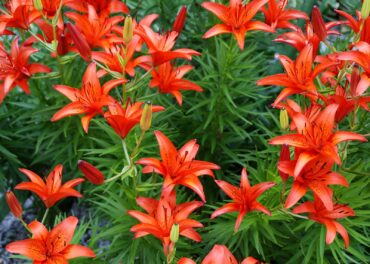
It’s time to think spring. Fall is the time to plant tulips, daffodils, crocus and other spring flowering bulbs. Use these early bloomers to welcome spring to your landscape. You’ll appreciate the color and cheery blooms after another long winter passes.
Extend your enjoyment by including early-blooming bulbs like snowdrops, squills and winter aconites. Add early, mid or late spring blooming tulips and early and midspring flowering daffodils for a continuous display of color.
Check the package or catalog description for bloom times. Gardeners in milder climates should look for low-chill varieties that need a minimal cold period to bloom or plant prechilled bulbs annually. In either case, wait until late fall or early winter to plant.
Create some winning combinations by planting white tulips with grape hyacinths or yellow daffodils with the equally assertive blue squills. Plant a fragrant garden bouquet by combining tulips, daffodils and hyacinths. Select varieties that bloom at the same time in complementary colors or blends.
Include summer flowering hardy lilies. Many are fragrant and these stately beauties provide vertical accents in the garden. Cut a few stems to display in a vase or mix with other flowers in summer bouquets.
Don’t let hungry animals stop you from brightening your spring with these bulbs. Include animal-resistant bulbs like hyacinths, grape hyacinths, daffodils, fritillarias and alliums.
If you plant tulips, crocus or lilies, be sure to use physical barriers like chicken wire or animal repellents like rain-resistant Plantskydd. It’s an organic repellent that comes in both liquid and granular formulations to protect bulbs that animals prefer to eat.
Lay the bulbs out on newspaper, apply the liquid repellent, and allow them to dry before planting. Add an extra layer of protection by sprinkling the granular repellent over the soil surface. In spring, begin protecting the plants before the animals begin feeding. Follow label directions for proper timing of additional repellent applications.
Prepare the soil before planting. Work compost, peat-moss or other organic matter into the top 12 inches of soil to improve drainage, a key factor in growing success.
Wait until the soil is cool to plant your bulbs. This is usually after the first hard frost or when night temperatures average between 40 and 50 degrees. Plant the bulbs two to three times their vertical height deep and at least two to three times their diameter apart.
Try grouping at least six to nine larger bulbs, like tulips and daffodils, and 15 to 20 smaller bulbs, like squills and crocus, together for greater impact.
Mix a low-nitrogen, slow-release fertilizer into the soil surface and water thoroughly after planting. Continue watering thoroughly when the soil is dry throughout the fall, while the bulbs grow roots.
After you enjoy the blooms next spring, leave the leaves intact until they yellow. Leaves produce the energy needed for next year’s floral display.
Mask the fading foliage by planting winter hardy pansies with your bulbs in fall, adding color to both fall and spring gardens. Or plant bulbs among perennials. Early spring flowering perennials double your pleasure, later bloomers extend the flowering season, and both help hide fading bulb foliage.
Break out your trowel and gloves and get busy planting. You’ll be glad you did when that first flower appears next spring.
Melinda Myers is a columnist and contributing editor for Birds & Blooms magazine and was commissioned by Tree World Plant Care for her expertise to write this article.
























